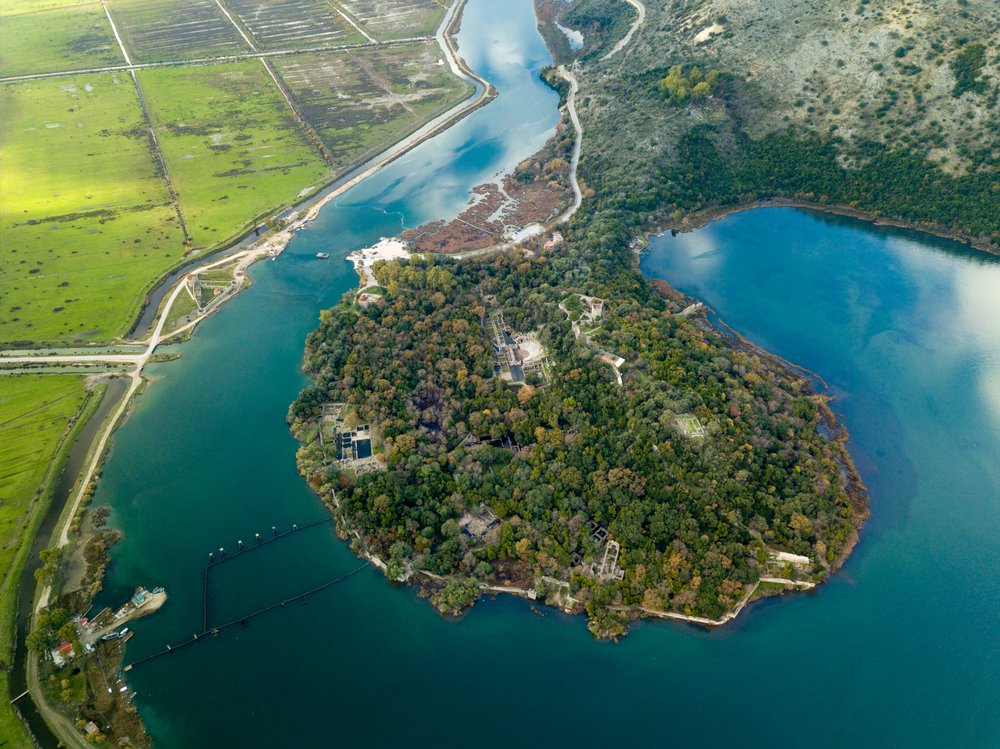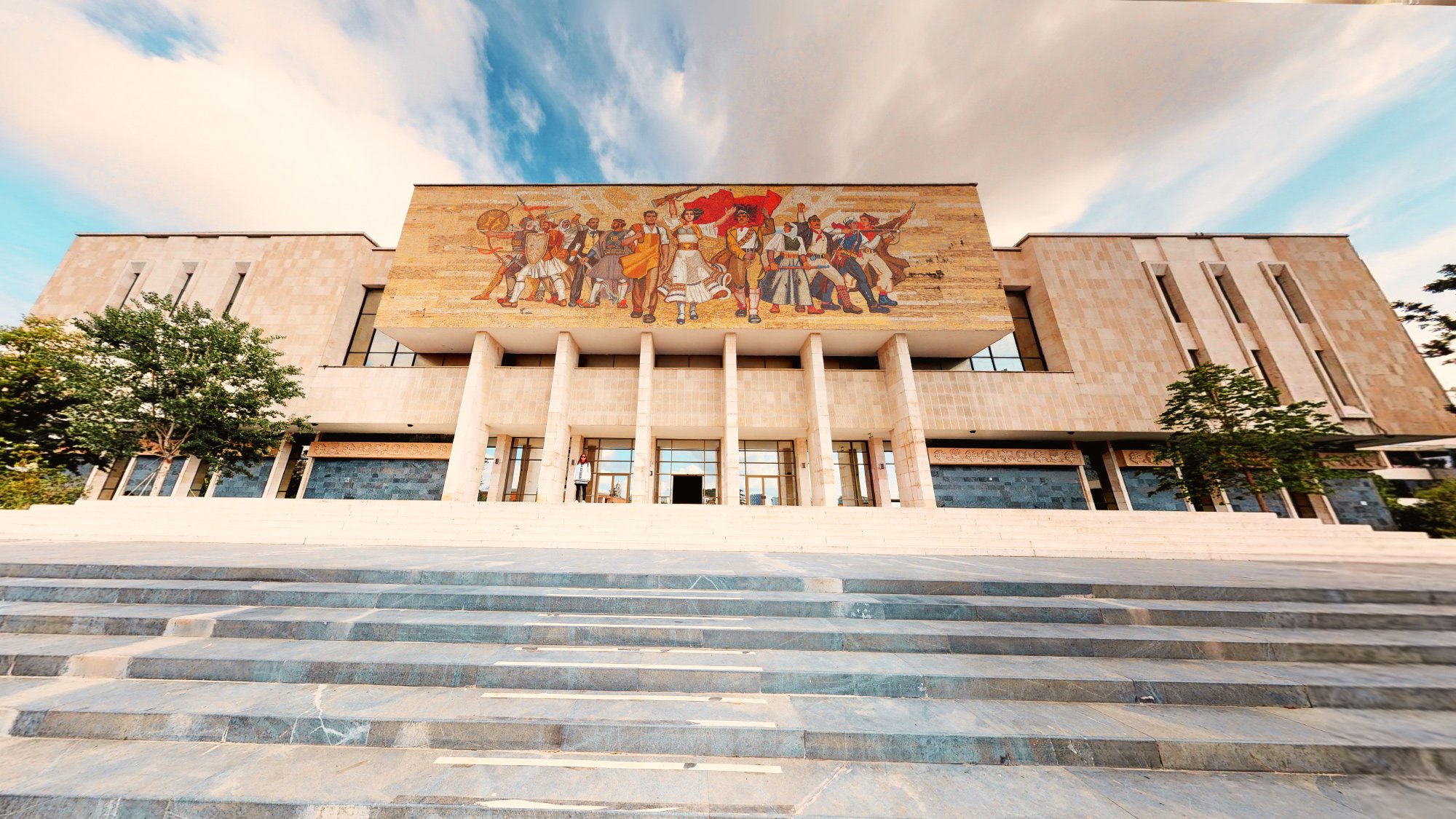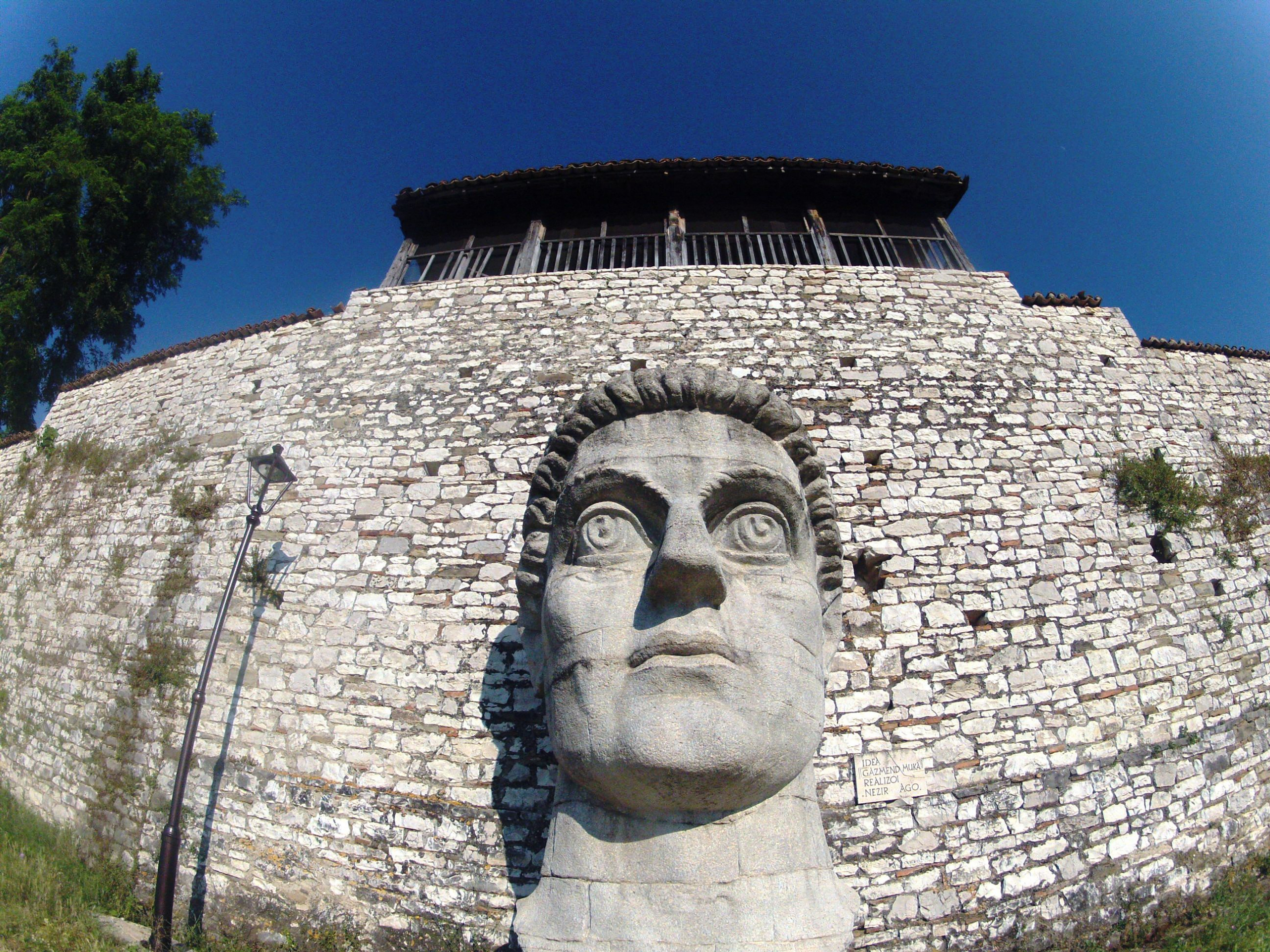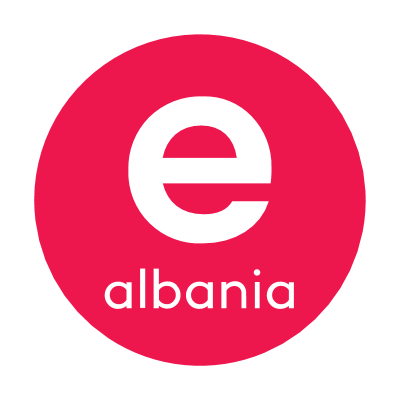Libraries
As early as the 4th century BC, there is evidence of libraries in the Illyrian lands; the libraries of Apollonia and Dyrrachium (1st century BC), and of Finiqi (2nd–3rd century) were mentioned. During the Middle Ages, libraries were located near religious institutions. They preserved valuable writings, such as codices and rare manuscripts. In the 13th–16th centuries, the libraries of Gjirokastra, Filati and Himara are mentioned, later those of Voskopoja, Vithkuqi, Selasfor (Zvezda), while in the middle of the 18th century, a library with 4,000 volumes existed in Korça.
In the period of the National Renaissance, libraries were established near patriotic societies and clubs. On 10.12.1922, the National Library was founded, as well as several libraries in cities such as Shkodra, Korça, Elbasan, etc. The central libraries are: the National Library, the Library of the Academy of Sciences, the Library of the Polytechnic University, the Library of the Higher Agricultural Institute in Tirana, etc.
In Albania, there are 366 public and local libraries, among which the most important are: “Marin Barleti” in Shkodër with about 200,000 volumes, “Thimi Mitko” in Korça with about 160,000 volumes, “Qemal Baholli” in Elbasan with about 170,000 volumes. The National Library, as the largest in the country, has over 1 million volumes.
Museums
The first known attempt to establish a national museum in Albania is that of Sotir Kole in 1922. In 1948–1949, the Archaeological-Ethnographic Museum, the Museum of Natural Sciences and the Anti-Fascist National Liberation War Museum were opened; in 1951 the Archaeological Museum in Durrës is opened; later several national museums of various types were established, such as the National History Museum, the Skanderbeg Museum in Krujë, the Weapons Museum in Gjirokastër, the Museum of Education and the Museum of Medieval Art in Korçë, the Independence Museum in Vlorë, the Archaeological Museum and Ethnographic Exhibition in Tirana, the Renaissance Museum in Gjirokastër, museums in archaeological centers such as Butrint, Apoloni.
Memorials or House-Museums were established for prominent figures and events (the Skanderbeg Memorial in Lezhë, the Frashëri Brothers Museum, the Migjen Museum, the Luigj Gurakuqi Museum, the Hoxha Tahsini Museum, the Lushnje Museum, the Përmet Museum, etc.). Until the 1990s, a dense network of museums of various types, natures and sizes operated in most cities and villages in Albania.
Cultural monuments in Albania are historical, cultural and artistic evidence, mainly buildings and works of national representative value, which are protected by the state. In 1948, the first list of National Museums was officially announced, while in 1961, the museum-cities of Gjirokastra and Berat, the underground of Durrës, the Old Bazaar of Kruja and later the historical centers in Tirana, Vlorë, Korçë and Elbasan were put under protection. The Institute of Cultural Monuments is responsible for their maintenance, restoration and study.
Folk culture
Albanian ethnoculture as part of the national cultural heritage is an expression of the creative abilities of the people in the field of material and spiritual culture. It appears in various types of prose and folk poetry, music, dances and folk instruments, in clothing and household items, in folk architecture.
In oral folklore, it is rich and diverse according to the regions and historical periods it represents. The songs of the legendary epic (Epic of the Kreshniks – in the northern regions), are sung accompanied by the lute; historical songs include the periods from the beginning of the Albanian-Ottoman wars to the Anti-Fascist National Liberation War and are mostly presented with local distribution; lyrical songs are numerous and diverse throughout the country; civic folk songs have distinct features according to the cities.
In musical folklore, the way of singing in polyphony, without instrumental accompaniment, is characteristic in Southern Albania (Albanian polyphony has already been included in the list of masterpieces of the oral heritage of humanity protected by UNESCO), while in the North the songs of the “majekrahi” and songs accompanied by çifteli; urban folk music is distinguished by local features (ahengu shkodran), the music of Central Albania (Elbasan, Tirana) and of Berat, Korça, Vlora.
Folk dance is very diverse. The dances are lively, often with strong movements; they are presented with features according to the regions, genders and number of participants. In Northern Albania, the log dance (which is danced in silence) and the single dance are characteristic; in the eastern regions and in Central Albania, men’s double dances accompanied by curle and todër are danced, and women’s dances with two or more dancers dancing separately. Group dances are performed in straight lines, in two opposing lines and especially in an open or closed circle; dances in Southern Albania have polyphonic vocal accompaniment, where the recipient is distinguished.
In Albanian ethnoculture, customs and traditions with numerous variations according to the regions are characteristic, but also with common moral institutions, such as: trust, hospitality, honor, manhood. Customary law is another characteristic value of Albanian ethnoculture.
Folk creativity occupies a significant place in stage performances and on radio and television. There are many amateur groups and regional cultural associations with folk singers, dancers and instrumentalists. Regional folklore festivals are organized from time to time and since 1978 a national festival in Gjirokastër. The Folk Songs and Dances Ensemble is the central professional troupe for their interpretation.
Albania’s assets, recognized and protected by UNESCO
Albania has a rich cultural and natural heritage, recognized and protected by the United Nations Educational, Scientific and Cultural Organization (UNESCO). These assets include both tangible cultural and natural heritage, as well as intangible cultural heritage. Below is a complete summary of the elements inscribed on the relevant lists of the UNESCO Cultural Conventions:
- Tangible Cultural Heritage
Albania has inscribed four properties on the World Heritage List (established under the 1972 Convention concerning the Protection of the World Cultural and Natural Heritage, ratified in 1989), as follows, in chronological order:
- Butrint (1992), inscribed as cultural property.
- The Historic Centres of Berat and Gjirokastra (2005, extended in 2008), inscribed as cultural property.
- The Ancient and Primary Beech Forests in the Carpathians and Other Regions of Europe (2017), inscribed as natural and transnational property, together with 18 European countries.
- Natural and Cultural Heritage of the Ohrid Region (2019), where the Albanian part is registered as a mixed cultural and natural property, cross-border with North Macedonia.
- Intangible Cultural Heritage
In the framework of the implementation of the 2003 Convention for the Safeguarding of the Intangible Cultural Heritage, ratified in 2006, Albania has registered four elements on the two lists created by the Convention.
The Representative List of the Intangible Cultural Heritage of Humanity includes:
- Albanian Folk Iso-Polyphony (2008);
- Transhumance: seasonal migration of livestock (2023), a transnational element, registered together with 9 other countries (Andorra, Austria, Croatia, France, Greece, Italy, Luxembourg, Romania, Spain);
- Tropoja Dance (2024).
The following is inscribed on the List of Intangible Cultural Heritage in Need of Urgent Safeguarding:
- Xhubleta: skills, craftsmanship and forms of use (2022).
These elements reflect the diversity and richness of the Albanian tangible and intangible cultural heritage, contributing to national identity and offering a precious value for world heritage.
UNESCO Memory of the World Programme
The Memory of the World Programme aims to preserve the documentary heritage of humanity and make it accessible to all, raising awareness of its cultural significance for all humanity. In the International Register of this programme, Albania registered the “Purple Codices of Berat” in 2005, thus protecting it as a precious asset for all humanity.
The materials are part of the Albanian Encyclopedic Dictionary and are subject to copyright, we thank Josif Papagjoni for his contribution. © Copyright Albanian Academy of Sciences.








